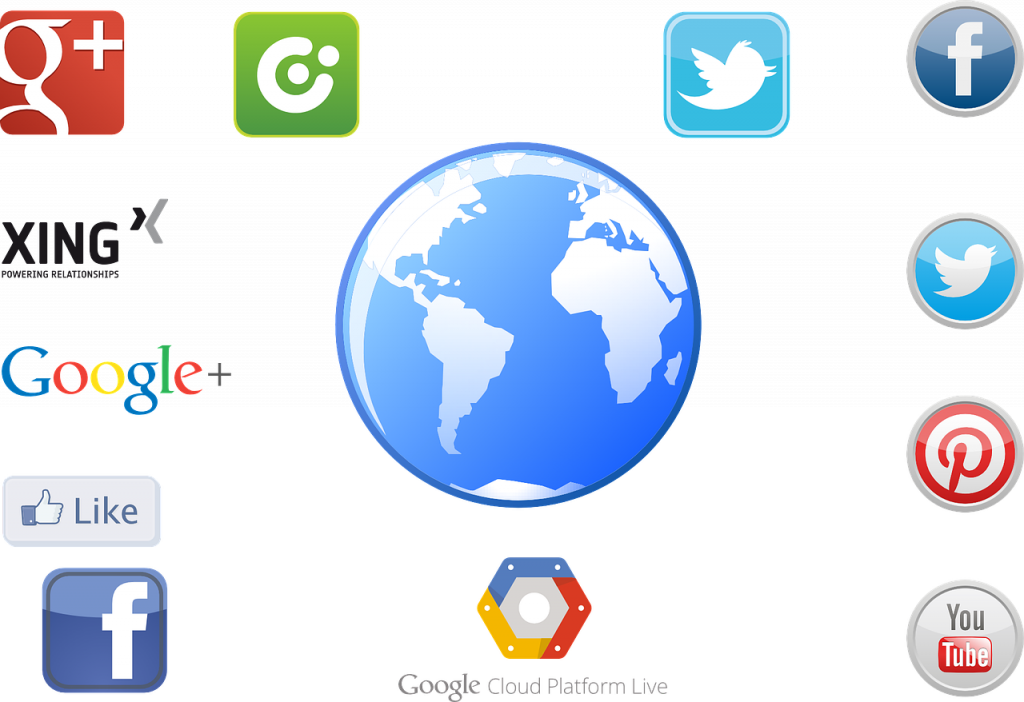
In the rapidly evolving digital landscape, social media has emerged as a pivotal tool for B2B companies striving to enhance their visibility, credibility, and influence. The statistics speak volumes: 84% of B2B executives report being influenced by social media in their purchasing decisions. This underscores the necessity for businesses to adopt effective social media growth strategies tailored to their unique needs. In this comprehensive guide, we will explore the various strategies B2B companies can implement to maximize their social media presence, engage their target audience, and ultimately drive business growth.
The Importance of Social Media for B2B Companies
Social media platforms have transformed the way businesses communicate, market, and engage with their audiences. For B2B companies, these platforms offer unparalleled opportunities to connect with potential clients, showcase expertise, and build lasting relationships. Unlike traditional marketing methods, social media allows for real-time interaction, enabling businesses to respond to customer inquiries, gather feedback, and adapt their strategies accordingly.

Moreover, social media serves as a powerful content distribution channel. By sharing valuable insights, industry news, and thought leadership content, B2B companies can position themselves as authorities in their respective fields. This not only enhances brand credibility but also attracts organic followers who are genuinely interested in the company’s offerings.
Leveraging LinkedIn for B2B Growth
One of the most effective platforms for B2B marketing is LinkedIn. With 97% of B2B marketers utilizing LinkedIn for content marketing, it has become an essential tool for establishing brand presence and generating leads. Here are some strategies to effectively leverage LinkedIn:
1. Optimize Your Company Page
Your LinkedIn company page is your digital storefront. Ensure it is fully optimized by showcasing your expertise, services, and value proposition. Use high-quality visuals, compelling descriptions, and relevant keywords to enhance discoverability. Regularly update your page with valuable content to attract potential clients and establish your brand as an industry leader.
2. Create Showcase Pages
Showcase pages allow you to promote specific brands or business units. This segmentation enables you to target distinct audiences effectively. By creating tailored content for each showcase page, you can engage different segments of your audience and drive more relevant traffic to your offerings.
3. Utilize Advanced Search Features
LinkedIn’s powerful search capabilities allow you to identify potential clients, partners, and industry influencers. Use advanced filters to narrow down your search and connect with individuals who align with your business objectives. This targeted approach can lead to more meaningful connections and business opportunities.

4. Engage Consistently
Regular engagement is key to building relationships on LinkedIn. Comment on posts, share insights and participate in relevant group discussions. By being an active member of the LinkedIn community, you can open doors to valuable collaborations and partnerships.
5. Leverage LinkedIn’s Messaging System
Personalized, concise messages can make a significant impact when reaching out to potential clients and collaborators. Avoid generic templates; instead, focus on providing tangible value to recipients. A well-crafted message can lead to meaningful conversations and opportunities.
6. Implement Content Marketing Strategies
Diversify your content by sharing articles, videos, infographics, and case studies. This varied approach caters to different audience preferences and helps maintain an active presence on the platform. Consistently delivering high-quality content showcases your expertise and keeps your audience engaged.
7. Explore LinkedIn Advertising
Consider utilizing LinkedIn’s advertising tools, such as Sponsored Content and InMail, to reach a highly targeted professional audience. These tools can significantly boost your visibility and lead generation efforts, driving more traffic to your company page and website.

8. Host Webinars and Virtual Events
LinkedIn supports webinars and live events, providing opportunities to engage directly with your target audience. Promote these events using visually appealing content and consider sponsored promotion to extend your reach. Webinars can position your brand as a thought leader while generating valuable leads.
9. Leverage Employee Advocacy
Encourage your employees to share company content and engage with their professional networks. Employee advocacy amplifies your brand’s reach and lends authenticity to your messaging. When employees share their experiences and insights, it fosters a sense of community and trust.
10. Analyze and Optimize
Regularly review your LinkedIn analytics to understand what content resonates with your audience. Use this data-driven approach to refine your strategy, focusing on the types of content and engagement methods that yield the best results.
Integrating Social Media with CRM
To enhance customer engagement and gain deeper insights into their audience, B2B companies should consider integrating social media with Customer Relationship Management (CRM) systems. This integration, often referred to as social CRM, allows businesses to leverage social media data to improve customer relationships and streamline marketing efforts.

Benefits of Social CRM Integration
- Comprehensive Customer Insights: By incorporating social media data into CRM systems, businesses can gather valuable information about customer preferences,behaviors, and sentiments that may not be available through traditional channels. This enhanced understanding allows for more targeted and effective marketing campaigns.
- Real-time Engagement: Social CRM enables businesses to monitor and engage with customers across multiple social media platforms. By tracking customer interactions, companies can respond promptly to inquiries or complaints, improving overall customer satisfaction and loyalty.
- Predictive Analysis: Analyzing social media interactions can provide insights into emerging trends and customer behaviors. This proactive approach allows companies to stay ahead of customer needs and maintain a competitive edge in the market.
- Personalization: By leveraging social media data, businesses can offer highly tailored experiences and communications to their customers. This level of personalization can lead to increased engagement, higher conversion rates, and improved customer retention.
Implementing Social CRM Integration
To effectively implement social CRM integration, businesses should:
- Align social media strategies with CRM objectives to ensure cohesive customer engagement across all platforms.
- Utilize social media management tools that integrate seamlessly with CRM systems to streamline data flow and analysis.
- Train staff to effectively use the integrated systems and interpret the data to improve customer interactions and marketing strategies.
Utilizing Social Listening Tools
Social listening tools are essential for businesses looking to gain valuable insights from social media conversations and online mentions. These tools allow companies to monitor, analyze, and act on social media data in real time, providing a wealth of benefits for marketing, customer service, and overall business strategy.

Advantages of Social Listening Tools
- Audience Insights: By monitoring social media conversations, businesses can gain a deeper understanding of their target market’s preferences, pain points, and behaviors. This data allows companies to tailor their products, services, and marketing strategies to better meet customer needs.
- Brand Awareness and Reputation Management: Social listening tools enable businesses to track mentions of their brand across various platforms, allowing for prompt responses to customer concerns and effective crisis management.
- Competitive Intelligence: Monitoring conversations about competitors provides insights into their strengths, weaknesses, and strategies. This information can be used to refine product offerings and identify market gaps.
- Trend Identification: Analyzing social media conversations helps businesses stay ahead of emerging trends and adapt their strategies accordingly. This proactive approach can lead to the development of innovative products or services.
- Content Creation and Campaign Optimization: Social listening tools help marketers understand which types of content resonate most with their audience, allowing for the creation of more engaging and effective marketing materials.
Choosing the Right Social Listening Tool
When selecting a social listening tool, businesses should consider factors such as the platforms covered, depth of analytics provided, ease of use, and integration capabilities with existing systems. Popular social listening tools include Hootsuite, Sprout Social, Brandwatch, and Talkwalker.
To maximize the benefits of social listening tools, businesses should:
- Define clear objectives for their social listening strategy
- Regularly analyze and act on the insights gained.
- Integrate social listening data with other business intelligence tools.
- Train staff to effectively use the tools and interpret the data.
Building a Strong Social Media Presence
To effectively grow their social media presence, B2B companies must prioritize authenticity and engagement. Here are some additional strategies to consider:

1. Share User-Generated Content
Encourage customers to share their experiences with your brand on social media. Highlighting user-generated content not only fosters community but also builds trust and credibility. When potential clients see real customers sharing positive experiences, they are more likely to engage with your brand.
2. Collaborate with Influencers
Identify industry influencers who align with your brand values and collaborate with them to reach a wider audience. Influencer partnerships can enhance your brand’s credibility and introduce your offerings to new potential clients.
3. Use Visual Content
Incorporate visually appealing content, such as infographics, videos, and images, into your social media strategy. Visual content is more likely to capture attention and drive engagement, making it an essential component of your B2B marketing efforts.
4. Host Contests and Giveaways
Engage your audience by hosting contests and giveaways on social media. This not only encourages participation but also increases brand visibility. Ensure that the prizes are relevant to your target audience to attract genuine engagement.
5. Monitor and Respond to Feedback
Actively monitor social media for feedback, both positive and negative. Responding to comments and messages in a timely manner shows that you value your audience’s opinions and are committed to providing excellent customer service.
In today’s digital landscape, social media is an indispensable tool for B2B companies looking to enhance their visibility, credibility, and influence. By leveraging platforms like LinkedIn, integrating social media with CRM systems, utilizing social listening tools, and focusing on authenticity and engagement, businesses can build a strong social media presence that drives growth and fosters lasting relationships.
At Sociobo, we understand the challenges B2B companies face in navigating the social media landscape. Our exclusive program employs social proof aggregation techniques to systematically enhance your brand’s visibility and authority on social media platforms. By boosting your engagement metrics, we can help you attract genuine followers and create a strong brand presence.
If you’re ready to elevate your social media strategy and harness the power of social proof, visit Sociobo.com to explore our tailored services. Let us help you unlock the full potential of social media for your B2B growth journey.






No comment yet, add your voice below!